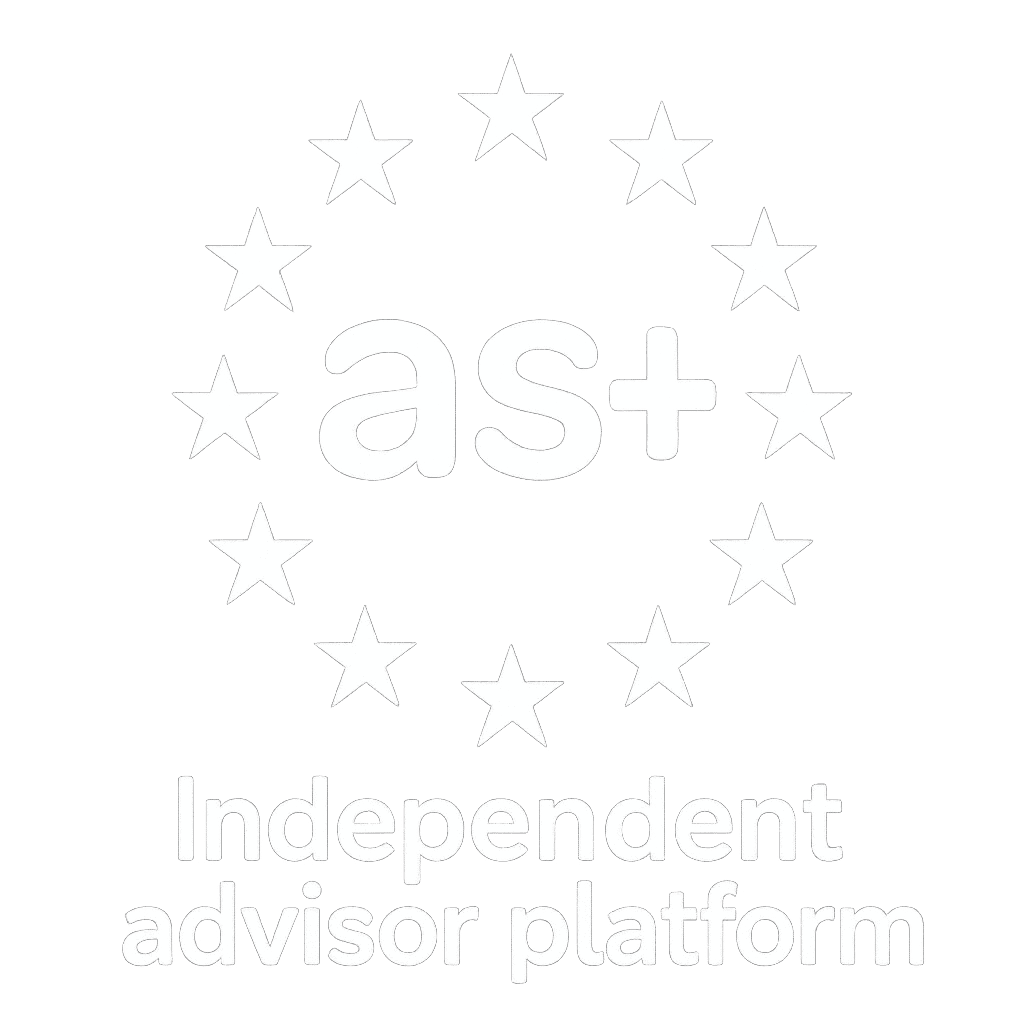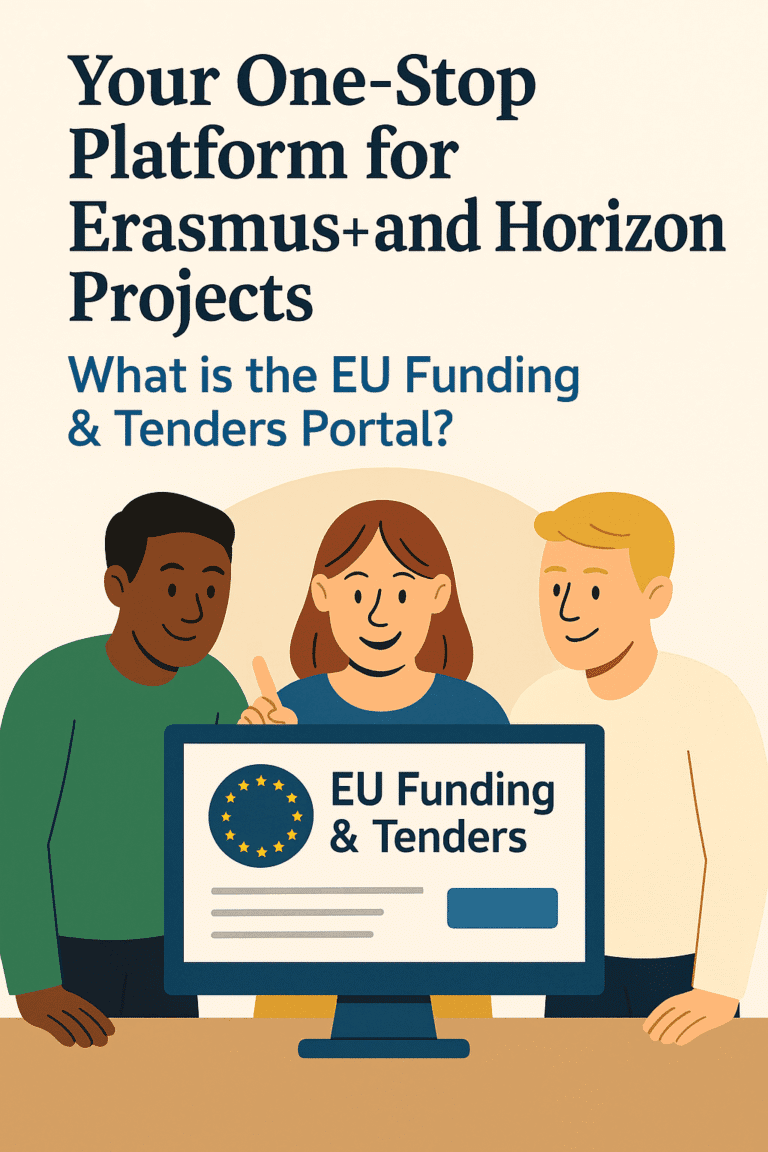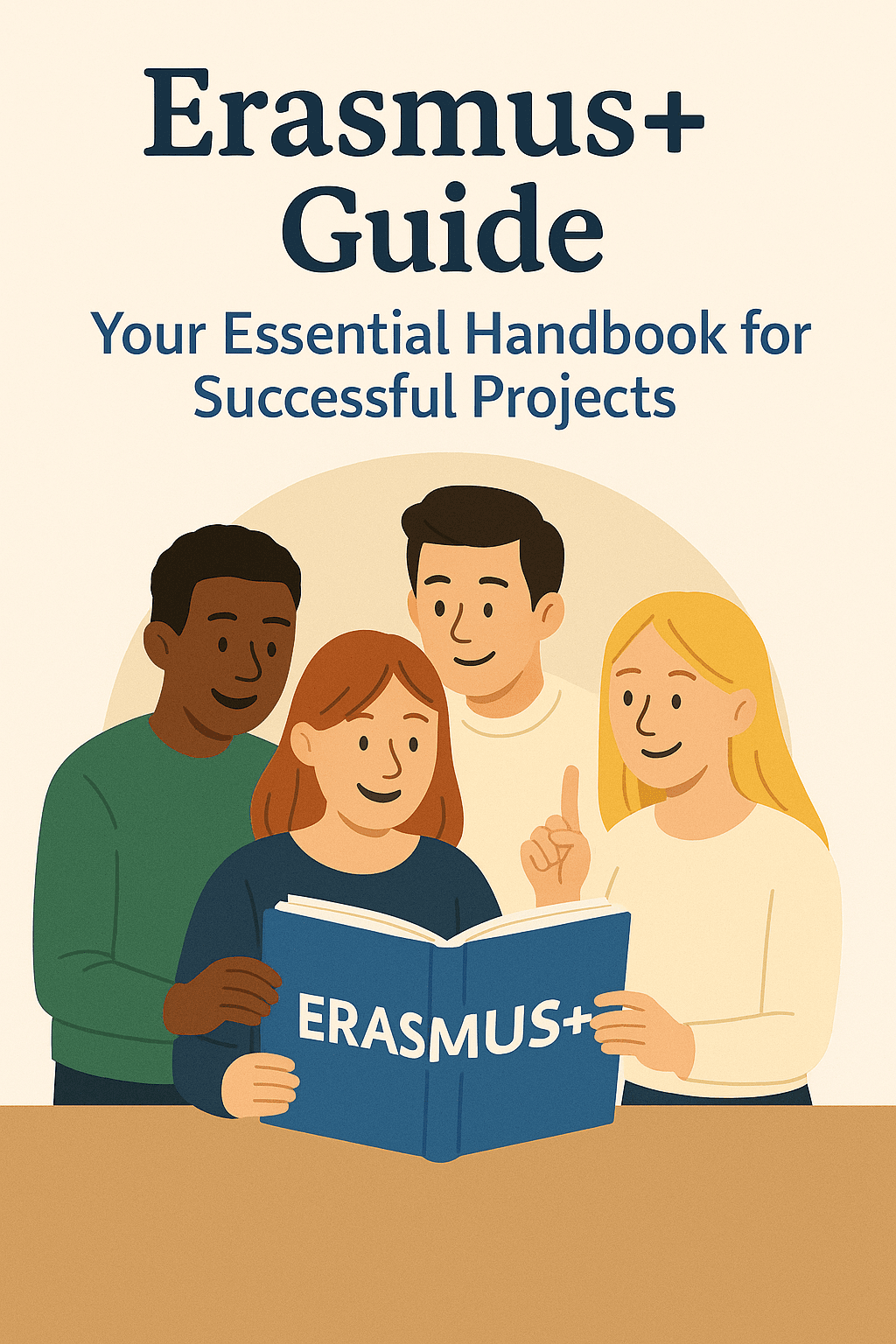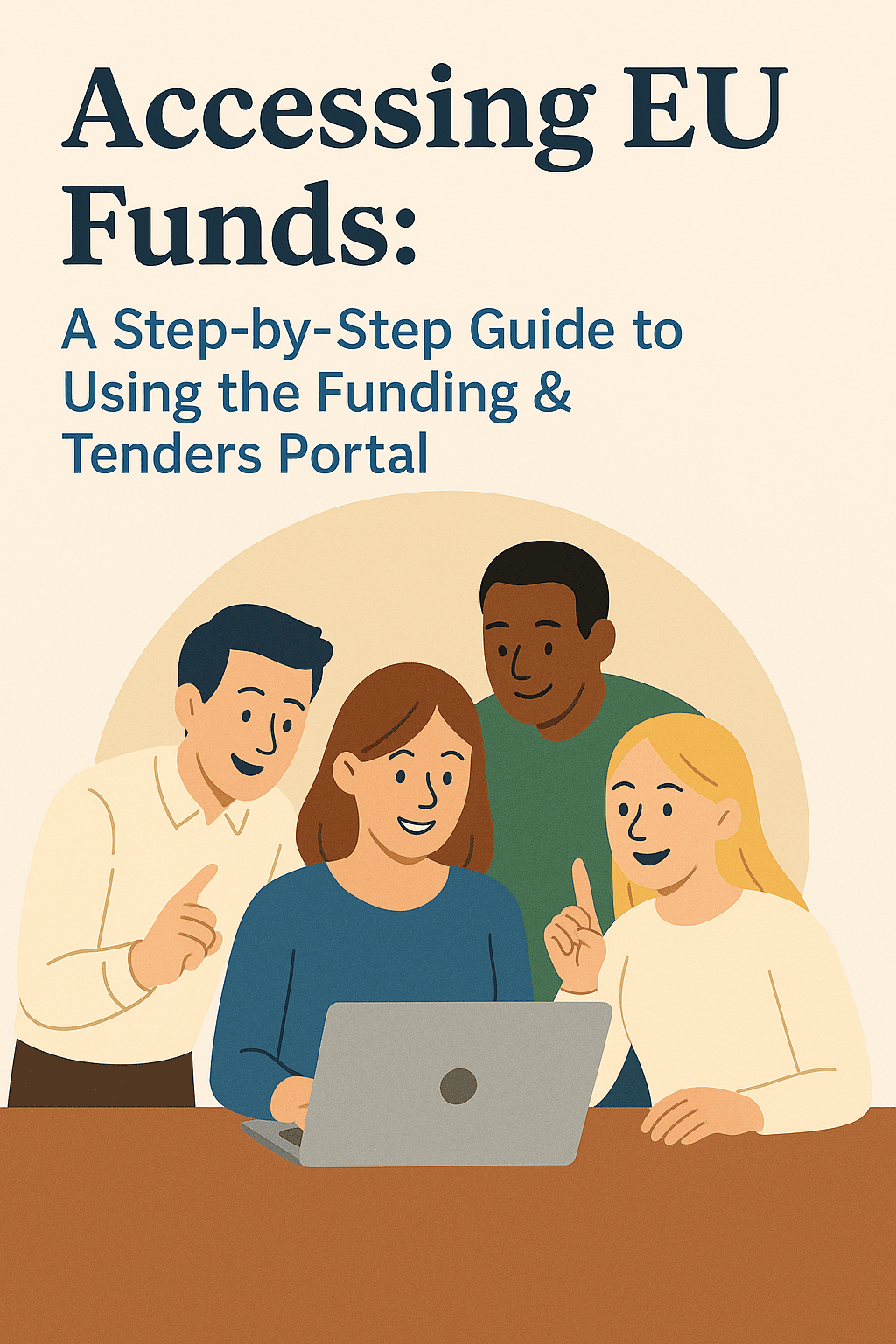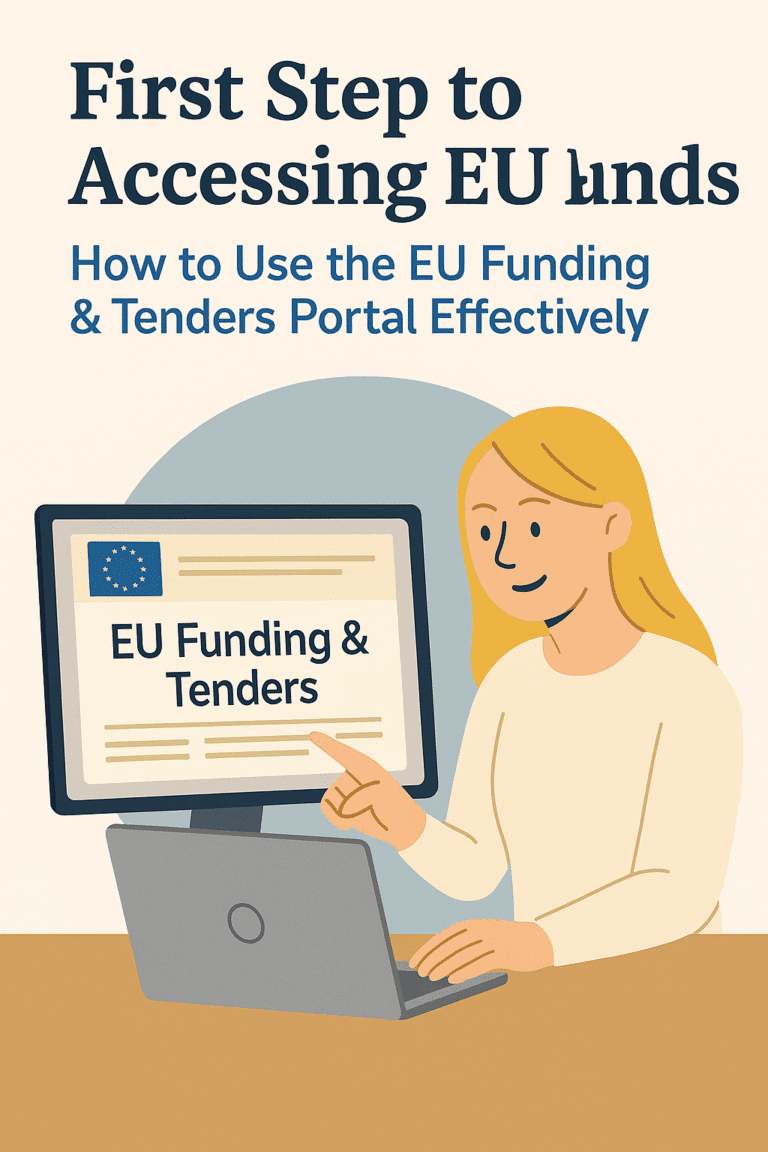Why You Can’t Write a Project?
“Why Can’t We Write a Project?” – Getting Started with Erasmus+ Projects
Have you ever seen joyful posts on social media saying “Our project has been approved!” and wondered why you haven’t been able to write a project yet? Or perhaps your school management keeps asking you in meetings to prepare an Erasmus+ project? How close are you to taking that step?
This guide is for those who are eager to learn about Erasmus+ project preparation but don’t know where or how to begin. What is a project? Where should you start? We will walk you through the process step by step without overwhelming you with too much technical jargon — you’ll solidify the technical aspects once you get more involved.
This article will especially focus on how to come up with and develop a project idea, how to find European partners who want to bring that idea to life with you, and what to do if you don’t have an idea yourself but want to join others.
We’ll specifically focus on KA2 School Education projects, such as:
- KA210-SCH: Small-scale Partnerships in School Education
- KA220-SCH: Cooperation Partnerships in School Education
(Separate guides for Adult Education [ADU] and Youth [YOU] projects are being prepared and will be shared soon.)
WHERE DO I START WITH AN ERASMUS+ PROJECT?
Let’s break it down into clear steps:
1. Create an EU Login account.
This is the platform where you’ll access the application forms and get your organization’s 8-digit OID (Organization ID). You must register with an email address you regularly use and enter accurate, real details.
2. Find your school’s OID.
After logging into the system, click on Organisations > Search for an Organisation and type your school’s name. If it’s registered, you’ll find it.
3. If your school is not registered,
You’ll need to register it via the EU’s Webgate platform. For this, you’ll need the school’s legal information — get these from the school administration in advance.
Once you have your personal EU Login and your institution’s OID ready, you’re good to go! Let’s talk about writing the project and applying through the system. And of course — how do you find partners?


WHAT SHOULD YOU CONSIDER FIRST WHEN WRITING AN ERASMUS+ PROJECT?
4. Start with a solid project idea.
And here’s the key: Don’t just think about your school or students.
Erasmus+ projects must benefit all partners. Think of what would be relevant and valuable across Europe.
5. Use inclusive language.
Even if you’re writing the application, you’re doing so on behalf of all partners. Use “our partnership,” “our students,” “according to UNESCO,” etc.
HOW DO YOU FIND ERASMUS+ PARTNERS? HOW MANY DO YOU NEED?
6. Finding partners is essential once you have your idea and a collaborative writing approach.
- You can use the School Education Gateway → Partner Search section (previously eTwinning).
- You can also join the Erasmus+ Partner Search Facebook group.
For KA210-SCH projects, you can request €30,000 or €60,000 in budget. So, you’ll typically work with 2–4 partners. They can be schools or NGOs — make sure they are aligned with your project topic.
Avoid choosing flashy countries (France, Netherlands, etc.) just for prestige. Choose based on relevance and capacity.
HOW TO WRITE AN ERASMUS+ PROJECT?
7. Assign clear roles to each partner. Even if you write the whole proposal, make sure you involve your partners in discussions and specify who will do what and why.
8. For KA220-SCH projects, budgets are larger (€120k, €250k, €400k), and you must produce tangible project outputs (Intellectual Outputs). Staff payment is possible. (This is a separate, detailed topic.)
[The rest of the translation will follow in the next message due to length. Devam ediyorum.]
9. When opening the KA210-SCH application form:
Go to Opportunities > Erasmus+ > School Education > KA210-SCH. Here’s what you’ll find:
- Context Section: Project title, abbreviation, duration (6 to 24 months), National Agency selection, and your requested budget (€30,000 or €60,000).
- Priorities and Topics: Choose one main priority (e.g. “Environment and fight against climate change” under horizontal priorities). Then, select two additional priorities that support your main goal (e.g. “Digital transformation” or “Combatting learning disadvantage”). Lastly, select three topics your project will address (e.g. green skills, environmental awareness, basic skills).
PROJECT DESCRIPTION SECTION
1. What are the concrete objectives and expected results of your project? How do these relate to the chosen priorities? (max 3000 characters)
Clearly state your goals and explain how they support the priorities you selected earlier. Include what your project aims to produce and why it matters in a European context.
2. Who are the target groups of your project? (max 3000 characters)
Typically: students, teachers, school staff, parents, and sometimes local authorities. Describe what changes or improvements you aim to bring for these groups.
3. What is the motivation behind your project and why should it be funded? (max 3000 characters)
Share your enthusiasm. If you have research or survey results (needs analysis), refer to them. You can also support your case with references to SDGs, UNESCO, UN goals, etc. End with a sentence showing the long-term benefits of your project.
4. How does the project address the needs and goals of each organization and the target groups? (max 3000 characters)
Use data and real needs of all partners, not just your school. Explain how the activities address those needs.
5. What are the benefits of transnational cooperation? (max 3000 characters)
Why do you need international partners? What can’t you do alone? Emphasize student benefits (language skills, intercultural competence), and how each partner brings value.
PARTICIPATING ORGANISATIONS
Provide partner information using their PIFs (Partner Identification Forms). Include experience, contact persons, and relevance to the project topic. Be sure to mention their existing challenges and expertise.
COOPERATION ARRANGEMENTS
1. How was the partnership formed and what are each partner’s strengths?
Say where and how you met your partners, what they bring to the project, and how their experience strengthens your proposal.
2. How will the project be managed and how will good cooperation be ensured?
Talk about roles and responsibilities, communication methods (Zoom, email, Trello, WhatsApp groups, etc.), frequency of meetings, and team structures.
3. Have you used or do you plan to use Erasmus+ platforms for preparation/implementation/follow-up?
Mention the Erasmus+ Project Results Platform. Explain how you used existing projects for benchmarking and that you plan to share all outputs there after approval.
4. What are the responsibilities of each partner?
Clearly outline tasks and ensure balanced distribution. You can list common responsibilities (e.g. dissemination), then list each partner’s unique duties.
ACTIVITIES
Describe mobility events: who goes where, why, when, and how you will prepare and select participants. Explain what they will gain from the activity. Detail the budget for each activity (travel, daily allowance, etc.).
IMPACT AND FOLLOW-UP
1. How will you measure whether the project reached its goals?
Explain how you’ll evaluate success — surveys, interviews, observations, comparison of skills before and after, etc. Focus on how, when, and with what tools you’ll measure change.
2. What long-term benefits will the project bring to the institutions?
Think about sustainability. Will project products be used in the curriculum? Will annual events continue? Will awareness and international connections remain?
3. How will project results be shared? Who is responsible for dissemination?
Go beyond school walls. Use local/national media, community events, education networks. Create a dedicated dissemination team across all partners and use collaborative tools to stay in sync.
PROJECT SUMMARY (Max 500 characters)
Summarize your project’s goals, activities, and results clearly. This summary will be used publicly if the project is approved.
PARTNERSHIP TIPS
When joining Erasmus+ partner search groups (like Facebook), keep in mind:
- Never comment “Please add us” under every post.
- Always check if the project matches your school’s profile.
- Respect requests for or against Turkish partners.
- If you’re interested in a project:
- Briefly explain how you can contribute.
- Mention what you can do to support dissemination.
- Contact via email if provided instead of posting in public.
- If you’re looking for partners:
- Clearly state your project idea and partner expectations.
- Never send the full project form to non-partners. Share only role descriptions until after approval.

We hope this guide helps you find qualified and motivated partners and build a solid project. Never hesitate to ask questions — there are many online communities ready to help.
And finally — if your project gets approved, you’ll be overjoyed. But if it doesn’t, don’t be discouraged. You’ll get feedback from your National Agency and can revise and resubmit.
We wish you the best of luck on your Erasmus+ journey!
Need Help With Your Erasmus+ Project?
If you need help during the application process, visit aserasplus.com — we’re here to support you.
If you have questions, feel free to comment or get in touch directly. We’ll respond as soon as possible.
